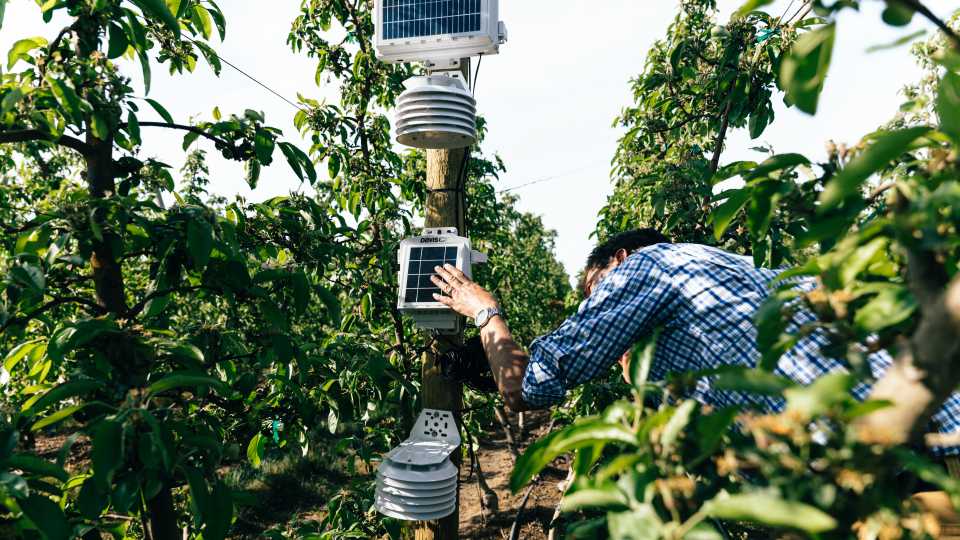New Insurance Options Coming for Specialty and Organic Crop Growers
USDA is expanding crop insurance options for specialty and organic growers beginning with the 2025 crop year. USDA’s Risk Management Agency (RMA) is expanding coverage options by allowing enterprise units by organic farming practice, adding enterprise unit eligibility for several crops, and making additional policy updates. This is the first of several announcements this summer, which will include new coverage for grape growers in the West and beyond.
The following changes will be made beginning with the 2025 crop year:
Enterprise and Optional Units:
- Expand Enterprise Units (EU) to almonds, apples, avocado (California), citrus (Arizona, California, and Texas), figs, macadamia nuts, pears, prunes, and walnuts.
- Allow non-contiguous parcels of land that qualify for Optional Units (OU) to also qualify for EU.
- Allow EUs by organic farming practice for alfalfa seed, almonds, apples, avocado (California), cabbage, canola, citrus (Arizona, California and Texas), coarse grains, cotton, ELS cotton, dry beans, dry peas, figs, fresh market tomatoes, forage production, grass seed, macadamia nuts, millet, mint, mustard, pears, potatoes (northern, central, and southern), processing tomatoes, prunes, safflower, small grains, sunflower seed, and walnuts.
- Expand OUs by organic practice to all remaining crops where OUs are available, and the organic practice is insurable.
Walnut Quality Adjustment: Allow sunburned damaged walnuts to be eligible for indemnity payments through quality adjustment.
Almond Leaf Year: Expand insurance coverage to younger trees by including trees in their fifth leaf year after being set out.
Processing Bean End of Insurance Period: Extend insurance coverage in Delaware, Maryland, and New Jersey by an additional 16 days.
These revisions come through the Expanding Options for Specialty and Organic Growers Final Rule published today by the Federal Crop Insurance Corporation. This Final Rule will update the Common Crop Insurance Policy Basic Provisions, Area Risk Protection Insurance Basic Provisions, and includes changes to individual Crop Provisions. The enterprise unit availability will continue to be rolled out throughout the year with each crop’s contract change date and RMA will continue to evaluate expanding EUs to additional crops.
Additional changes in the June 30 Final Rule include:
New Breaking Acreage:
- Reduce administrative burdens on growers and the delivery system by removing written agreement requirements on new breaking acreage.
- Reduce coverage penalties on perennial specialty crop producers and producers of intensively managed crops, such as alfalfa, when they move to row crop production. This allows for a seamless transition without losing crop insurance coverage.
- Assignment of Indemnity: Provide flexibility for an indemnity payment to be issued via automated clearing house (ACH) or other electronic means when these methods do not allow for multiple payees.
- Good Farming Practices (GFP): Streamline and shorten the FCIC GFP reconsideration process by closing the administrative file following FCIC’s initial GFP determination.
- Double Cropping and Annual Forage: Clarify a producer must prove insurance history for the annual forage crop and meet the current double cropping requirements to receive a full prevented planting payment.
RMA continues to explore ways to improve risk management tools for specialty crop producers and will be announcing additional program enhancements later this summer. Some of those improvements include:
- Piloting the Fire Insurance Protection – Smoke Index (FIP-SI) crop insurance program for grapes in California for the 2025 crop year. The pilot program is an index-based endorsement to the Actual Production History (APH) Grape policy that provides additional protection against smoke damage and covers the liability between the APH policy’s coverage level and 95%.
- Expanding the Enhanced Coverage Option (ECO) to walnuts and citrus crops and increasing premium support to be consistent with the Supplemental Coverage Option.
- Expanding the Grapevine insurance program to an additional 29 counties in California. Grapevine insurance offers protection against vine losses in the event of several named perils.
- Releasing new Organic Practice Guidelines to producers for the 2025 crop year. These guidelines are to help producers report planted or perennial acreage insured under a certified organic or transitional practice.
For more information about crop insurance options, visit rma.usda.gov.










